Abstract
When binocular fixation is shifted between two targets which require change in vergence as well as an equivalent or greater alteration in the mean visual direction, the observed eye motions do not--as asserted by Yarbus (1957) and widely accepted today--consist of slow symmetrical change in vergence, upon which a conjugate (binocularly balanced) saccade is additively superimposed. In all tested target configurations, an unexpectedly large fraction of the total change in vergence occurred during the saccades; observed values ranged from about 40% in certain tasks, to essentially 100% when large version (4 degrees) was combined with small vergence change (less than 1 degree). In these latter situations, binocular congruence can be restored within about 50 ms by appropriately unbalanced saccades, rather than about 500 ms, as expected if slow fusional vergence movement were required. When larger vergence changes are demanded, additivity between vergence movement and conjugate saccade is also violated in that the rate of vergence change during the saccades is several-fold larger than the rate before the saccade or during subsequent completion of the required change in vergence. Furthermore, the residual fusional vergence movement observed in these tests was usually strongly asymmetrical, and often almost entirely monocular. Vertical saccades are nearly as effective as horizontal saccades in mediating a large fraction of an intended change in vergence. In saccades, which contributed strongly to (or fully mediated) an intended vergence change, target-specific binocular differences in saccadic excursion of as much as 40-50% were observed; hence, these eye movements are not fully yoked, as the term 'conjugate' implies. Instead, the eyes behave in such situations as though visual information from each eye is processed separately prior to the saccade, in order to generate the neural signals which control open-loop saccadic movement of the eye.
Full text
PDF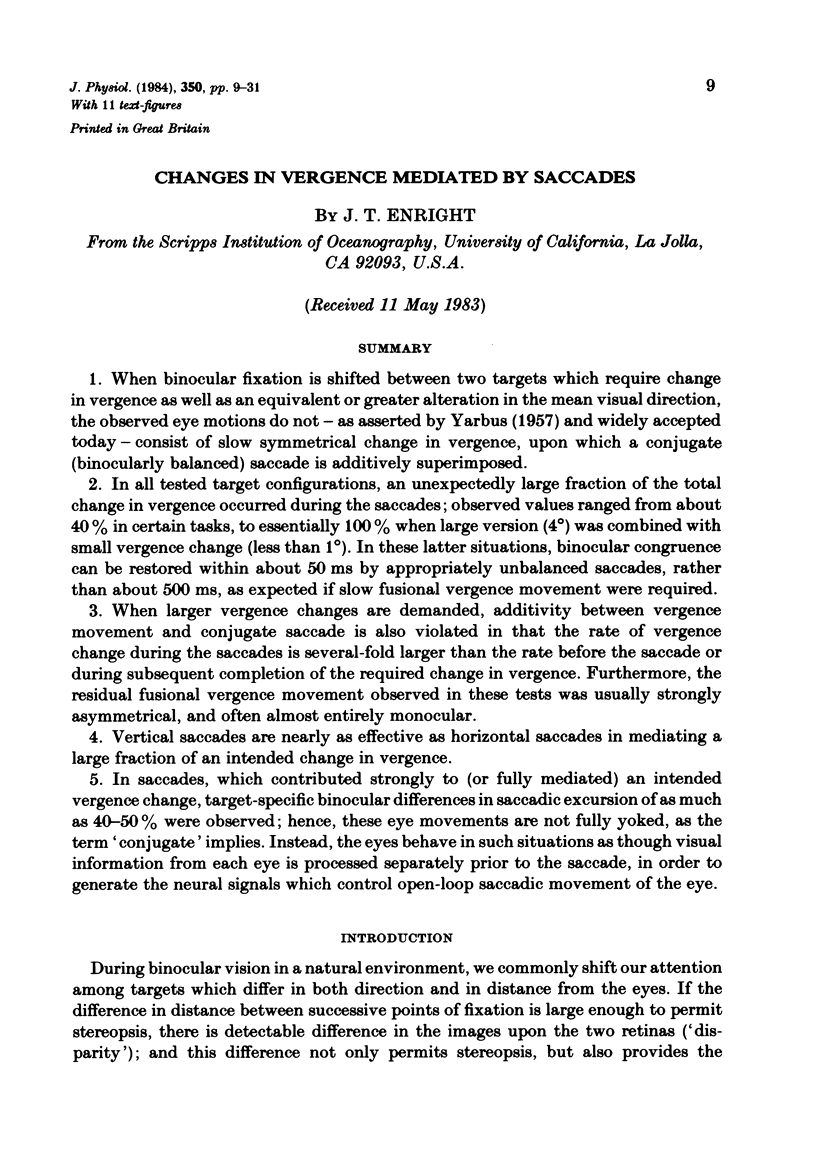
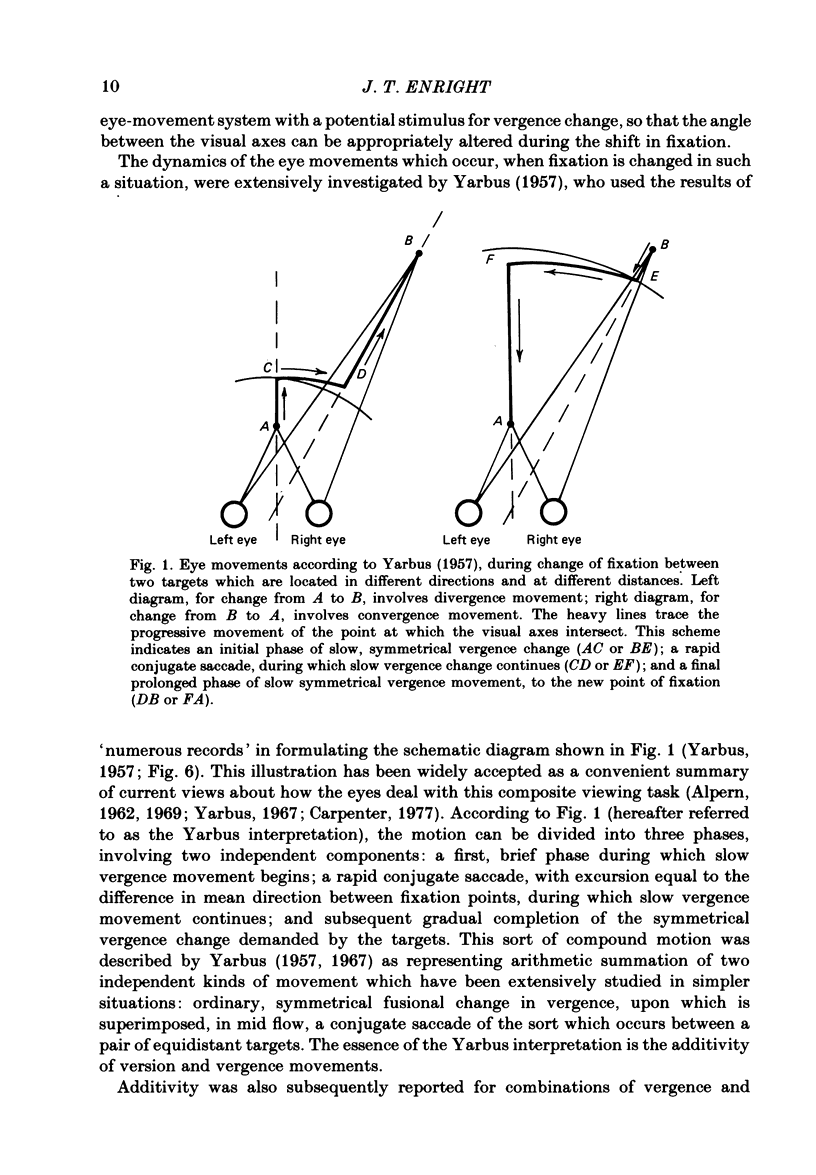
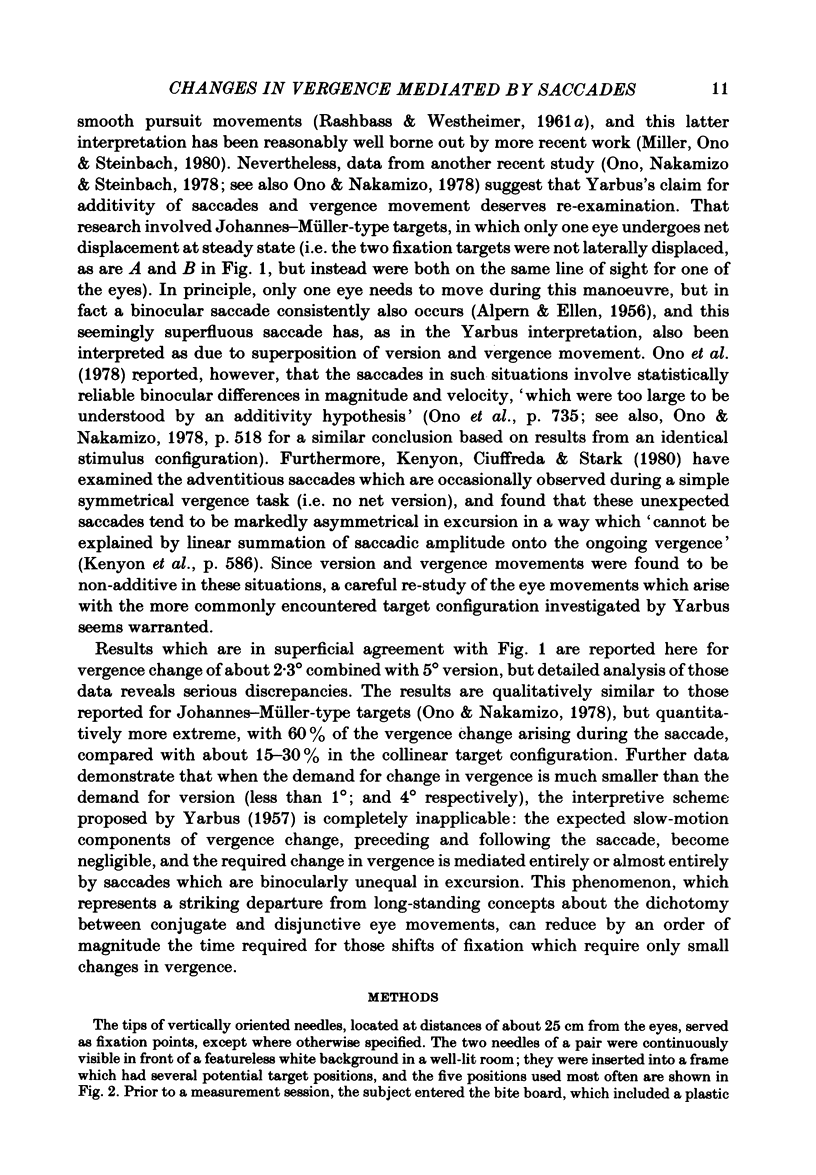
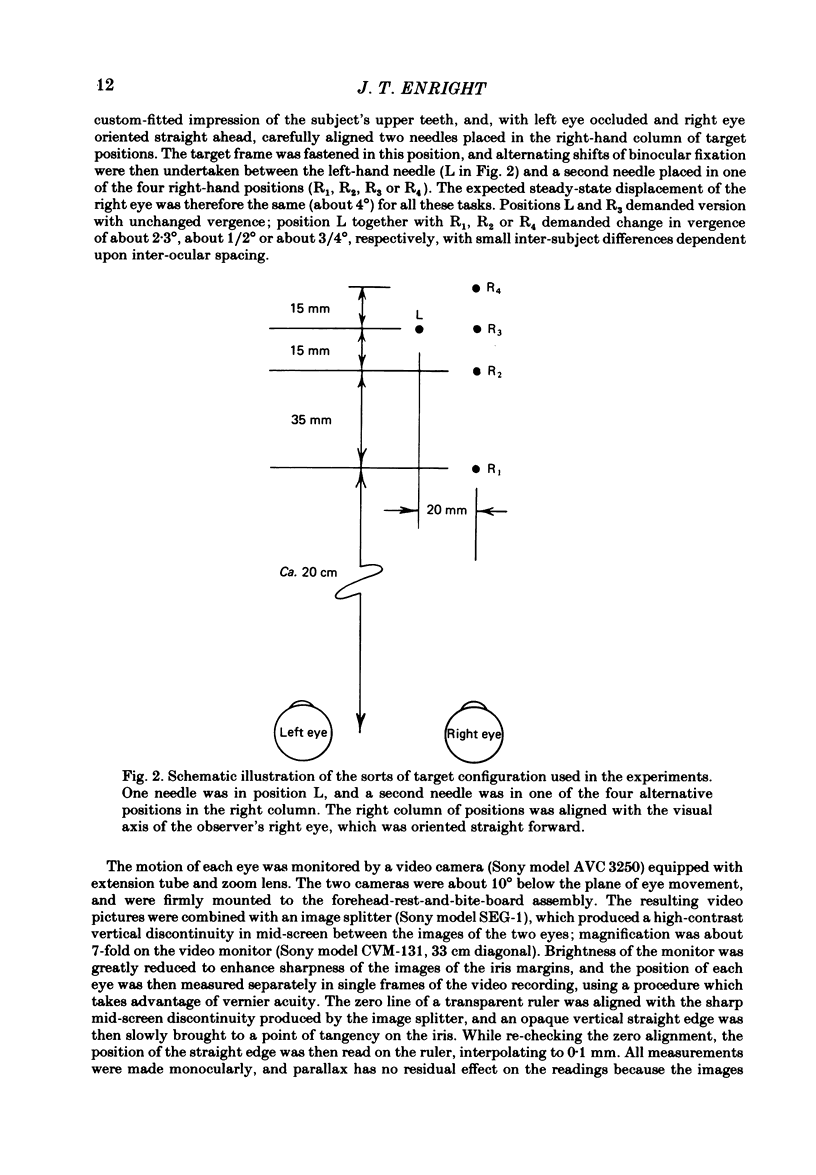
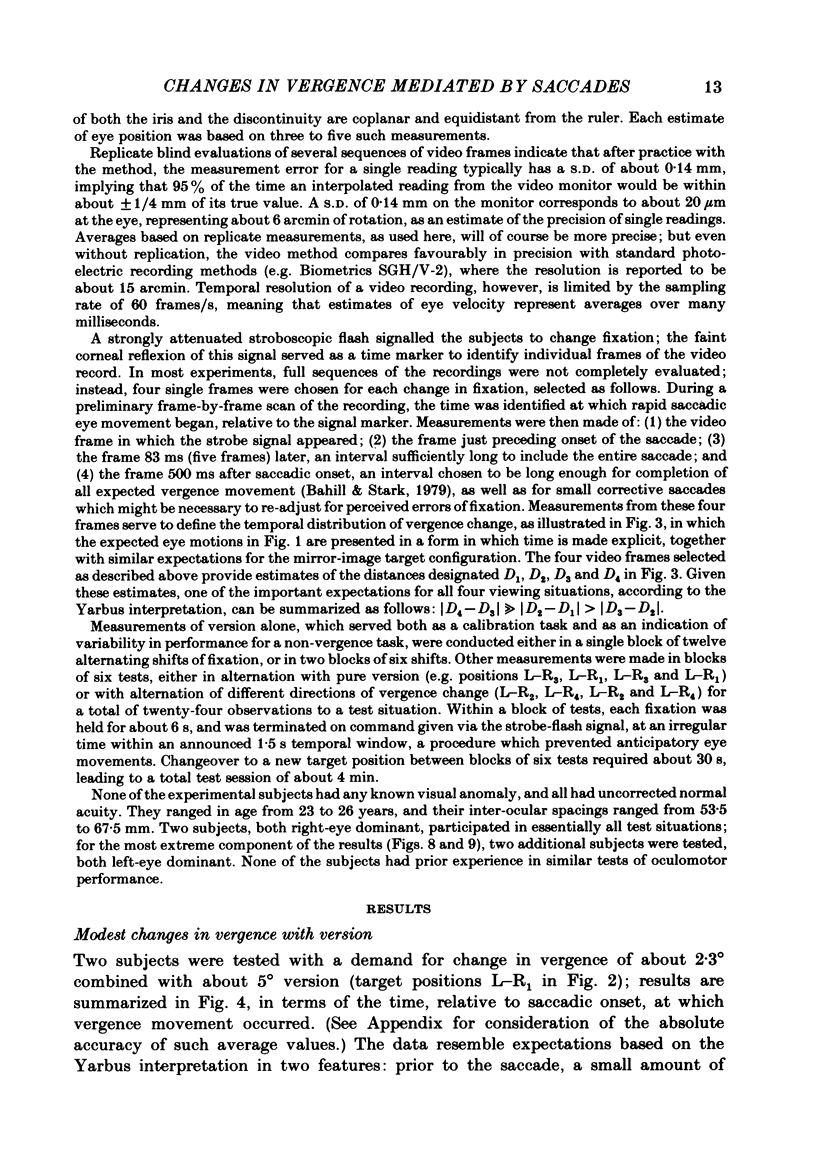

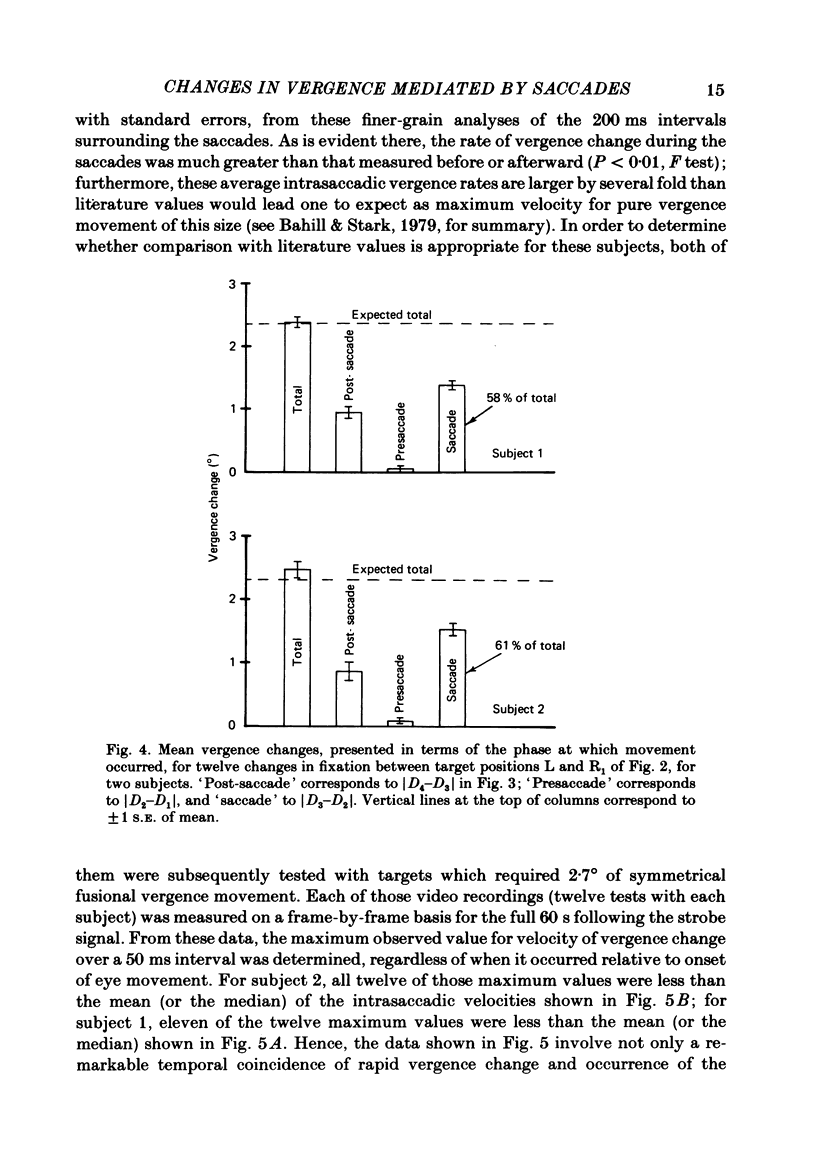
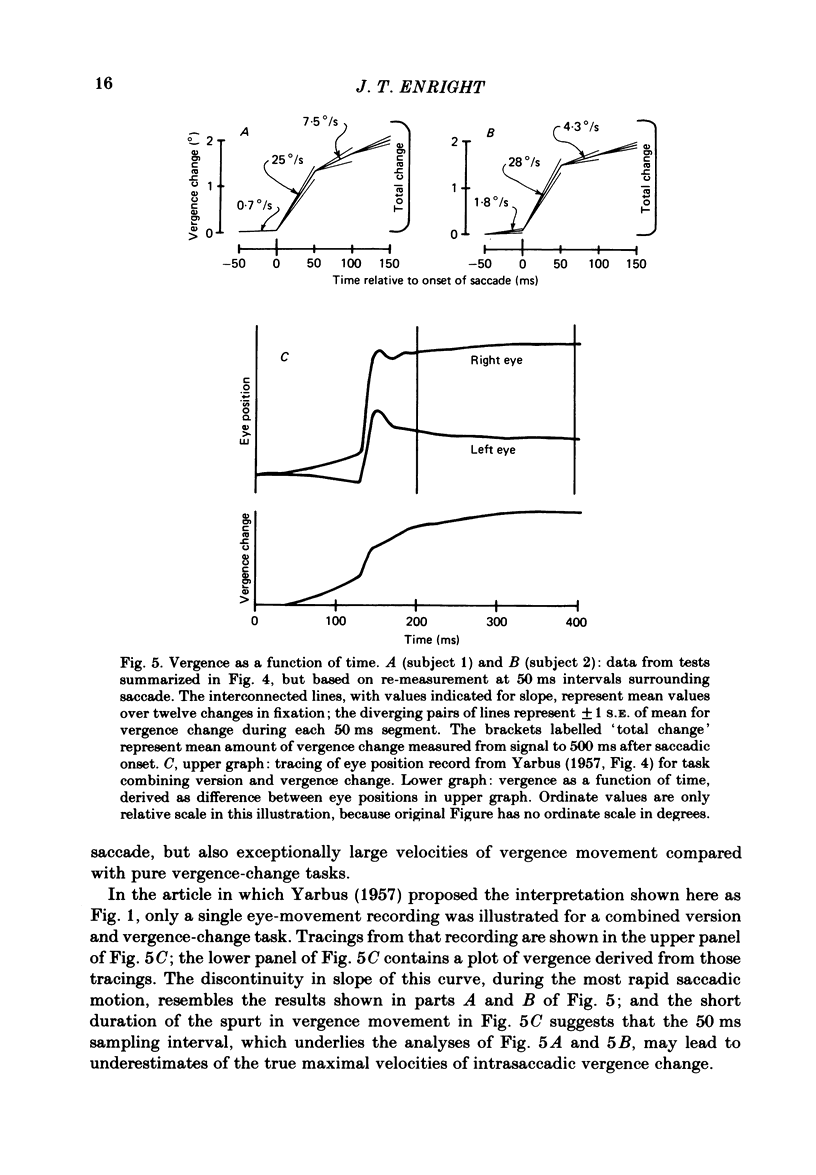

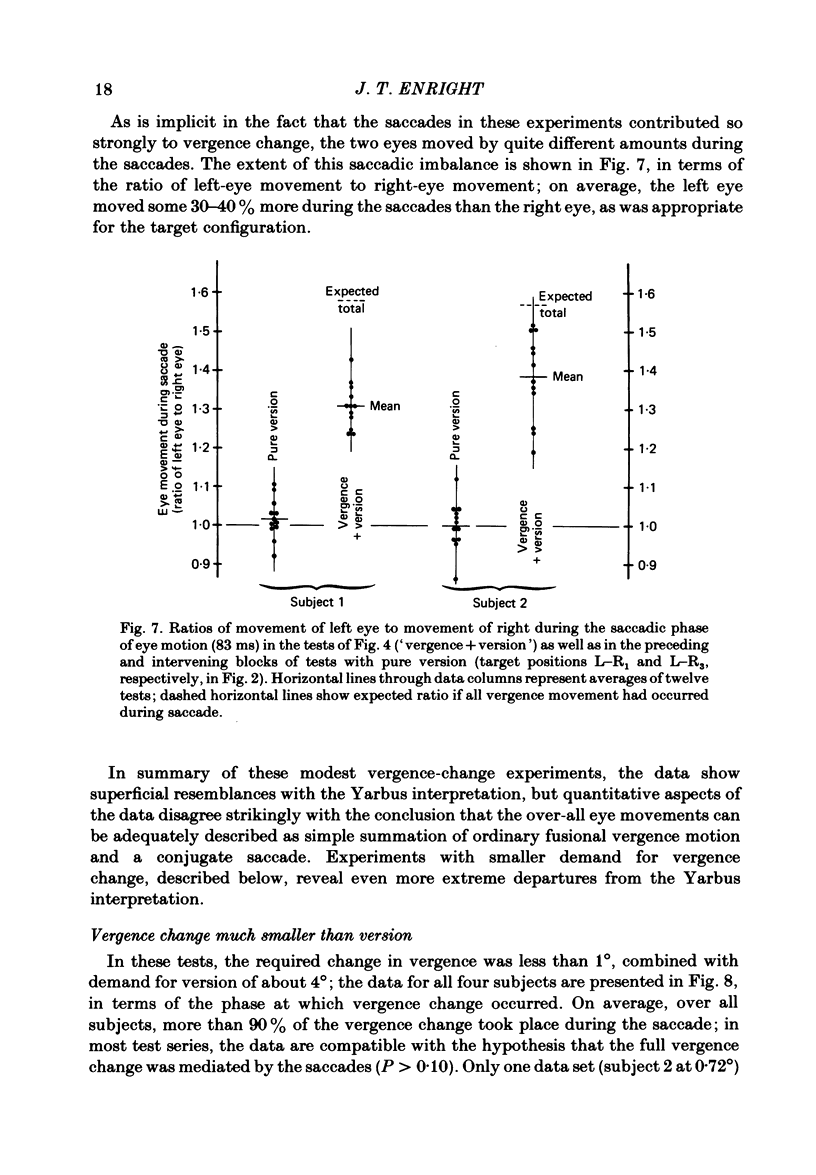

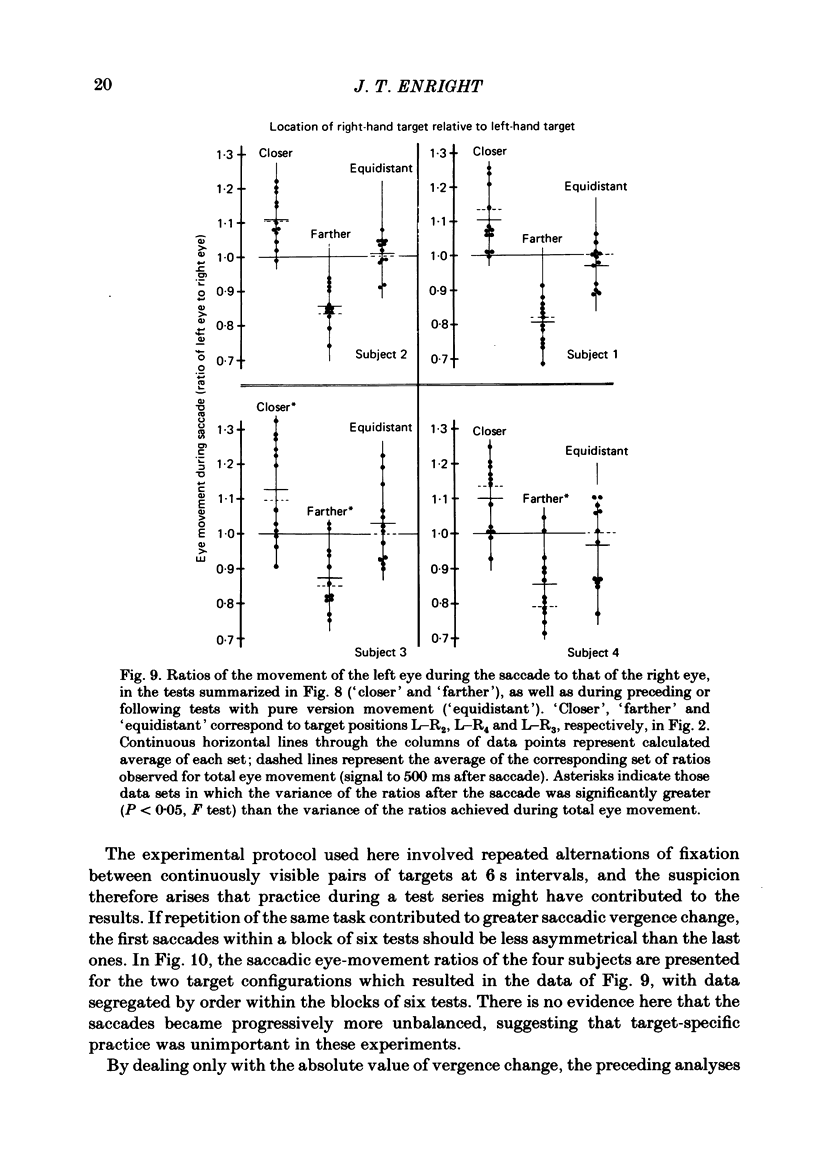
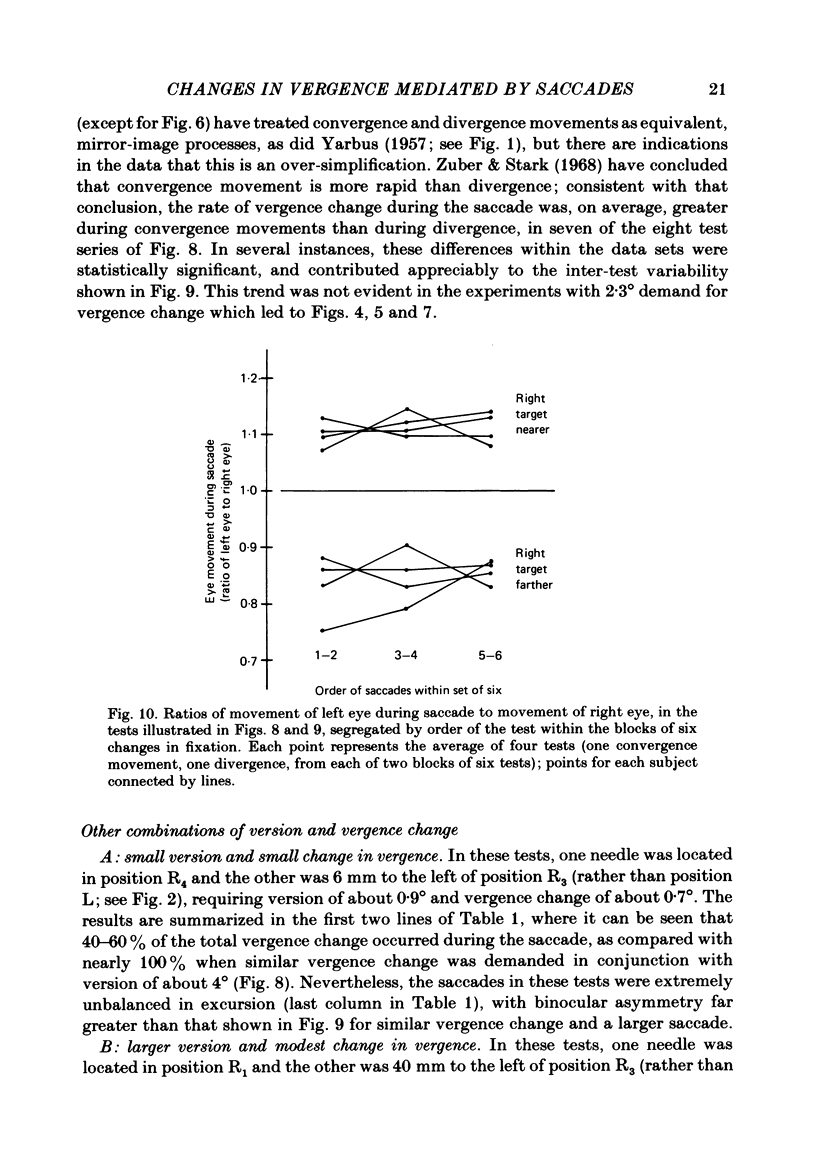
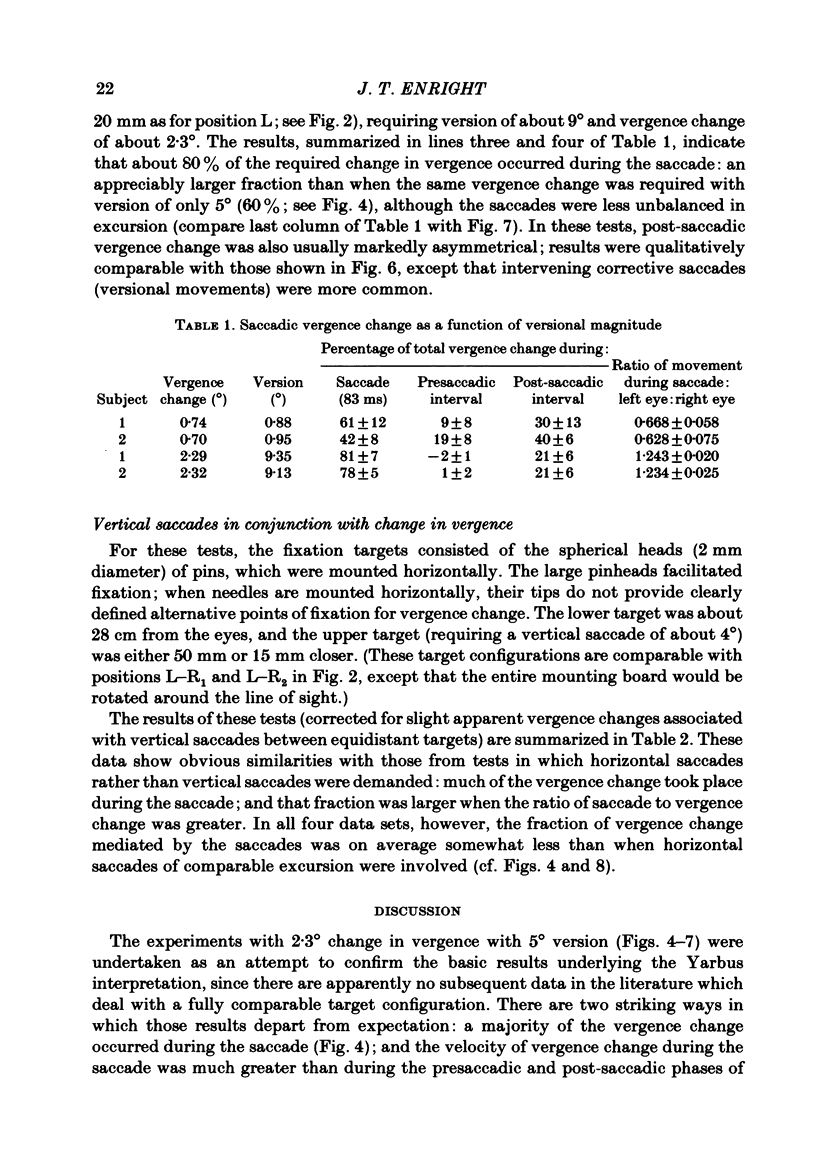
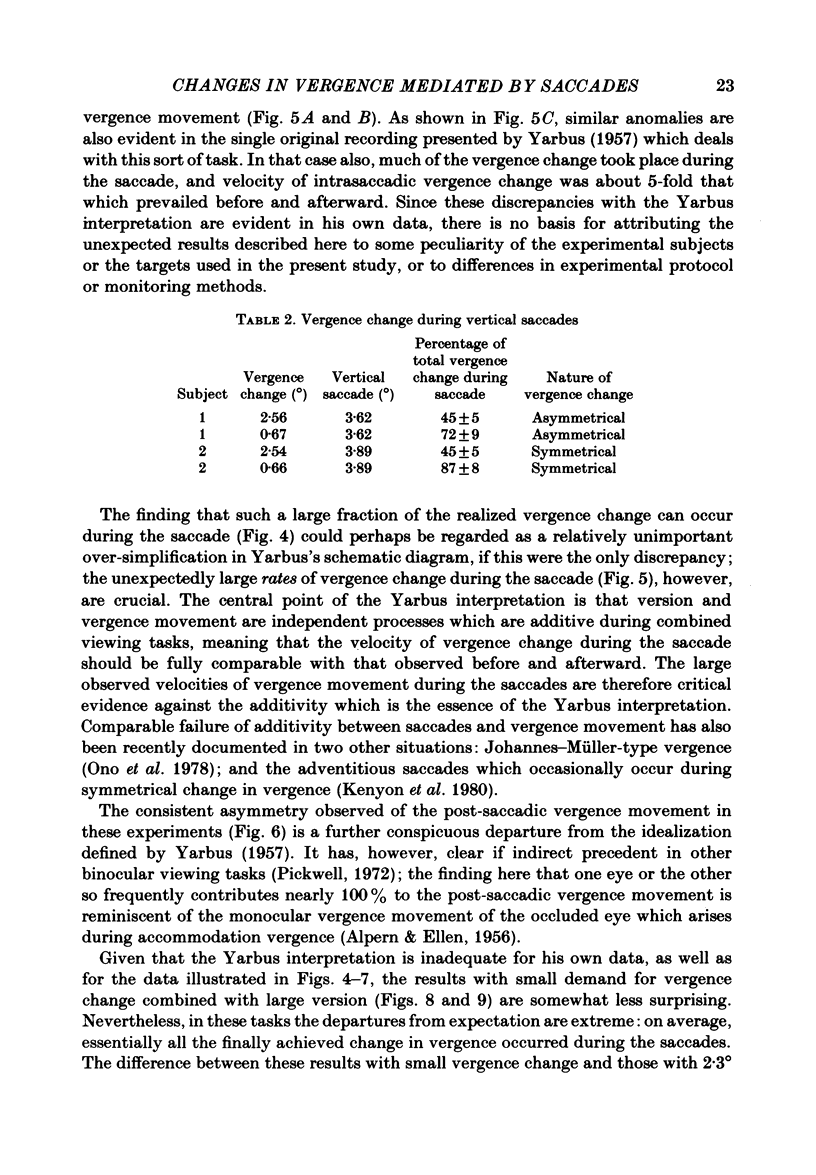


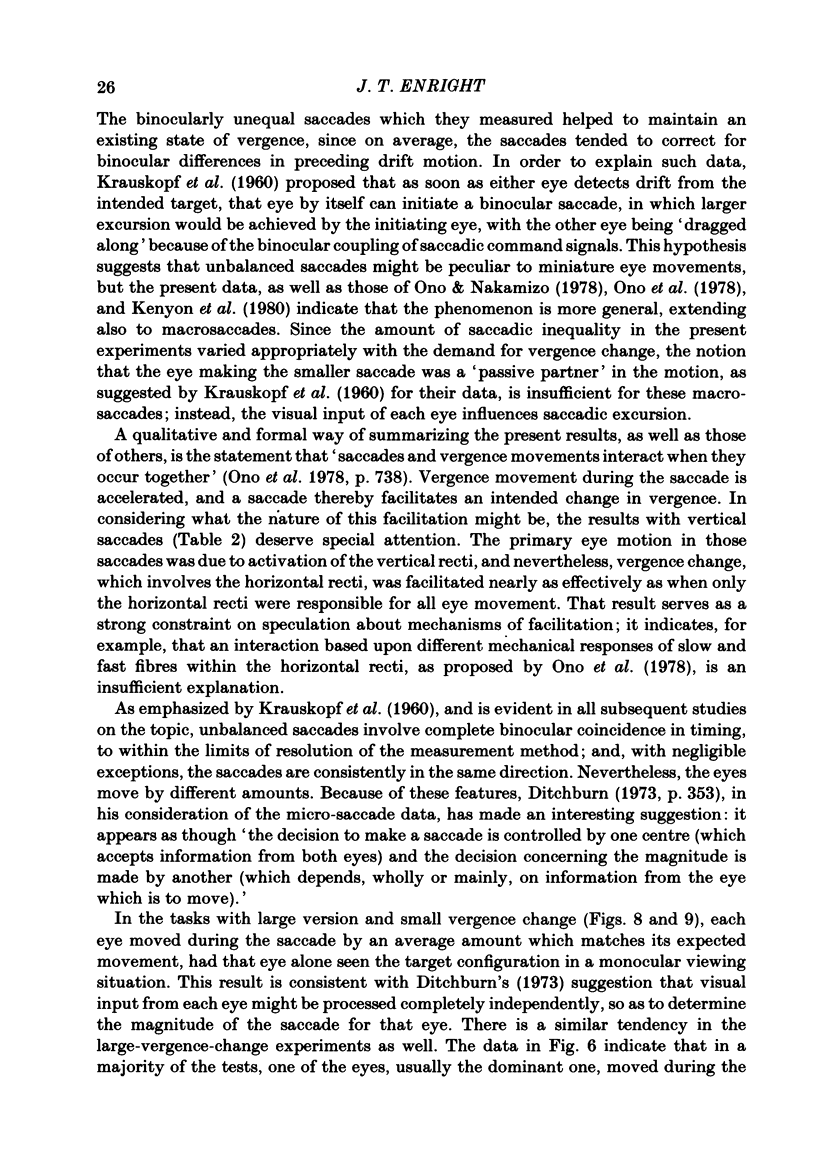
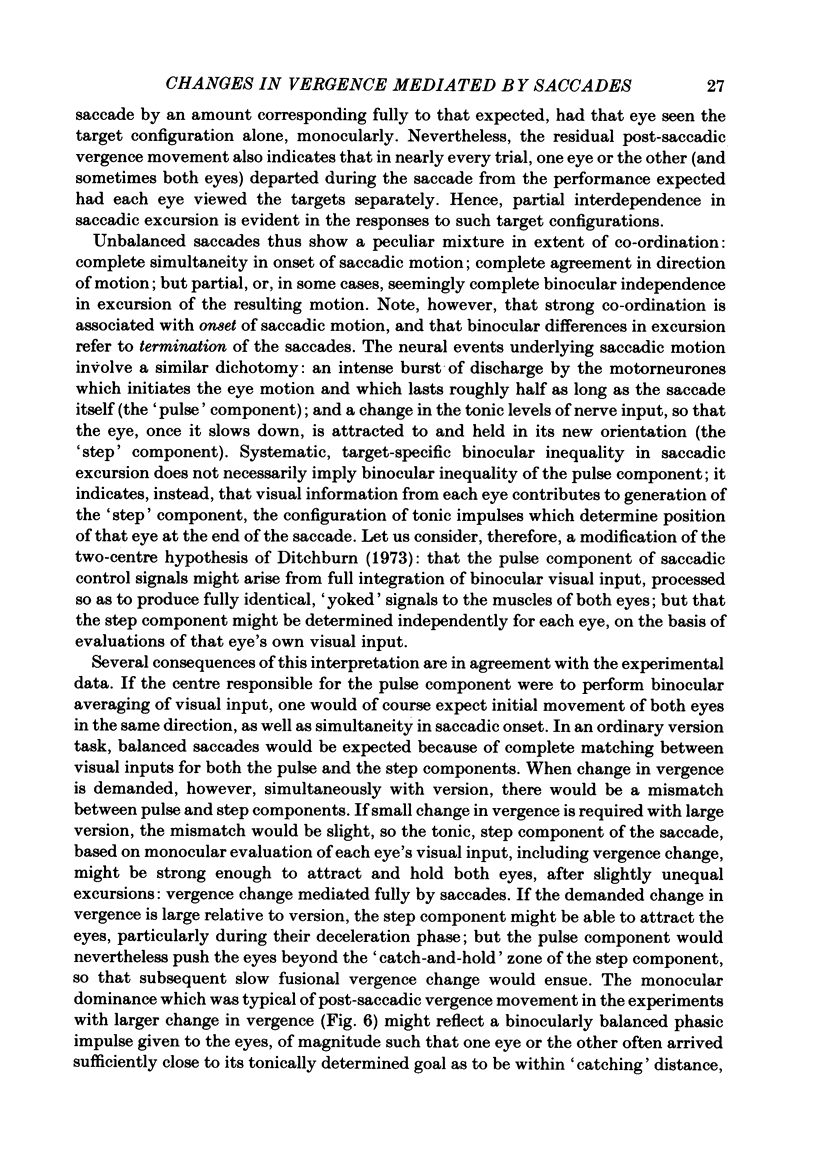
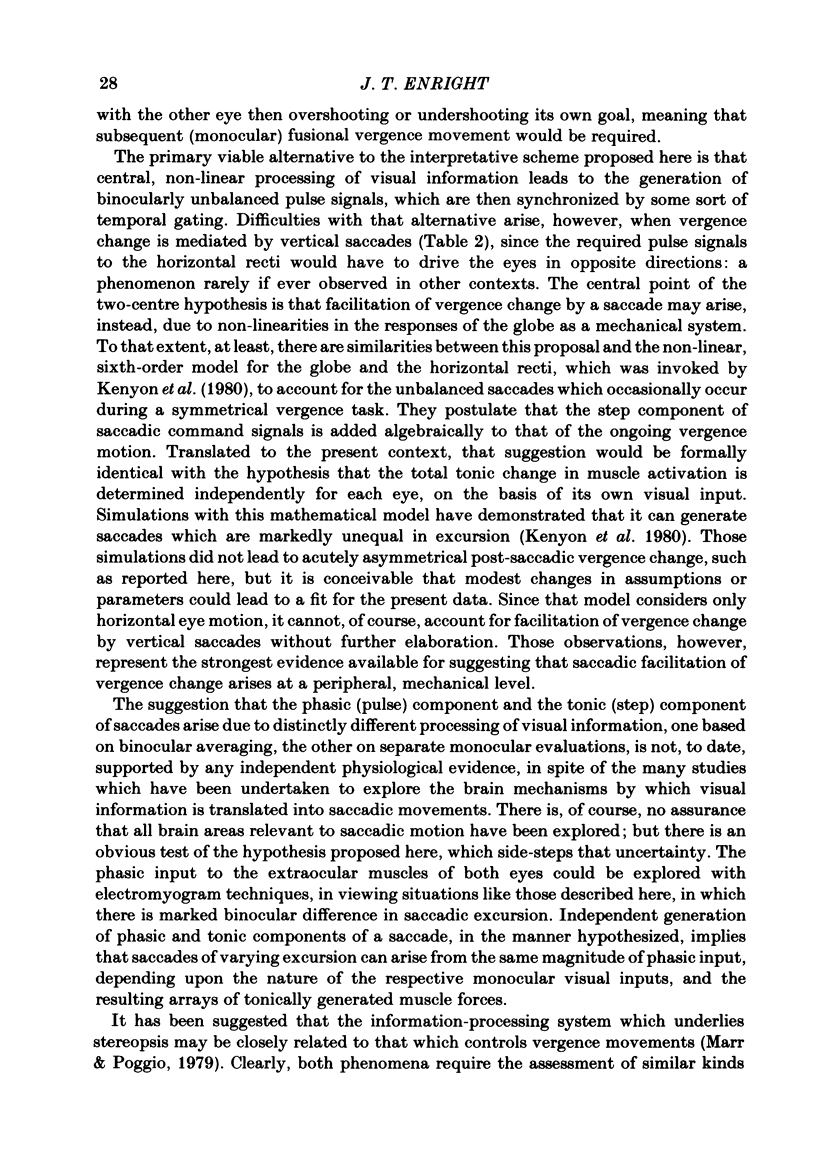
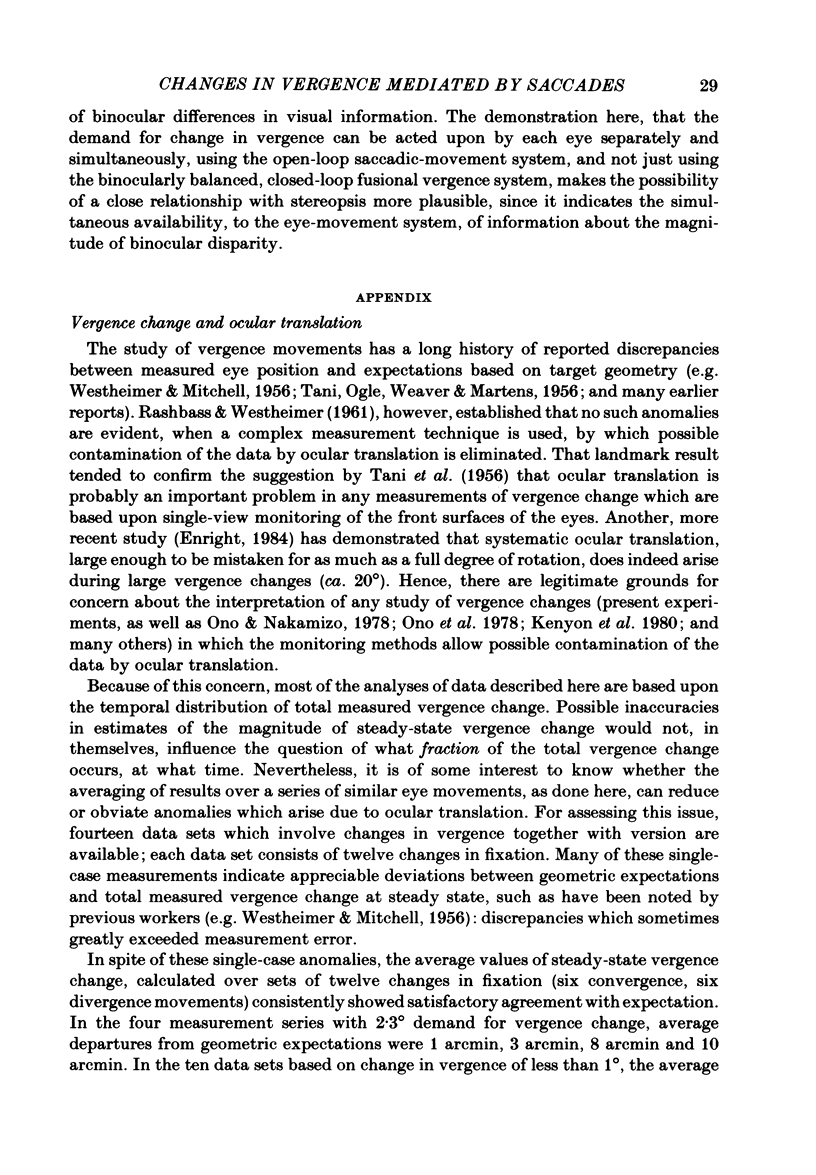
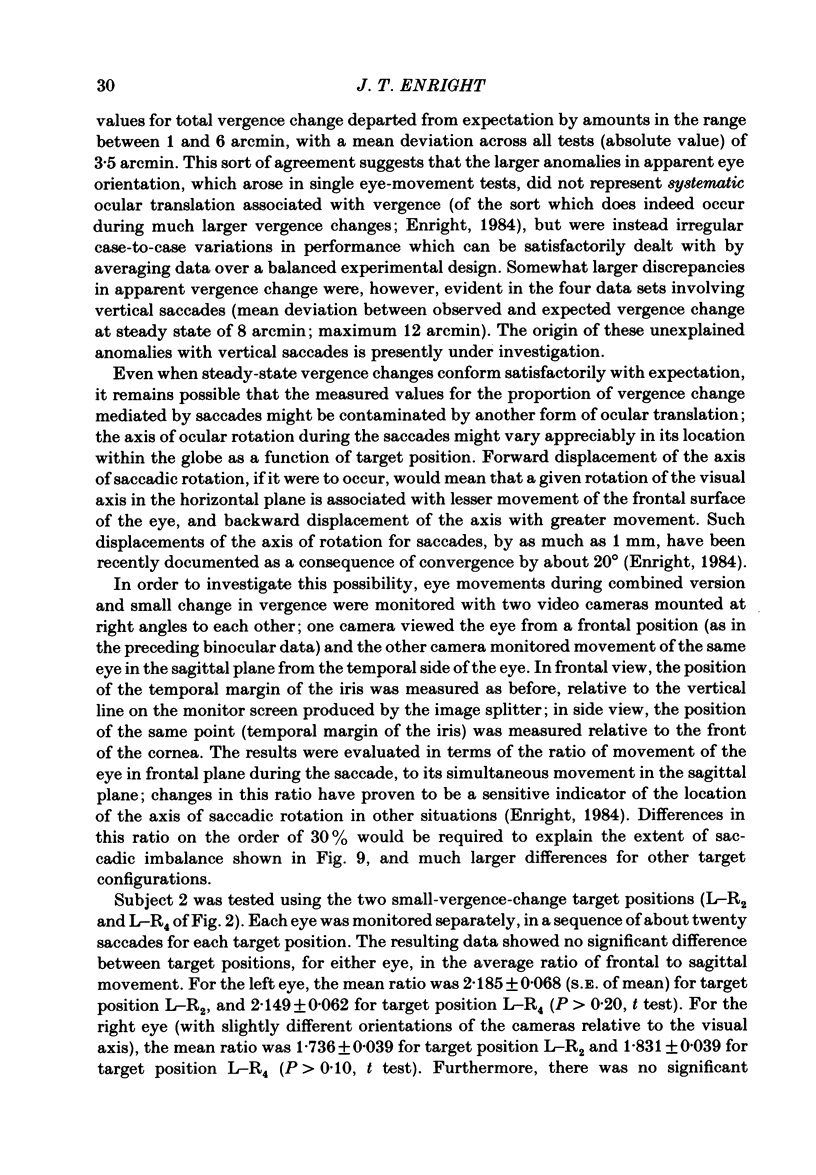
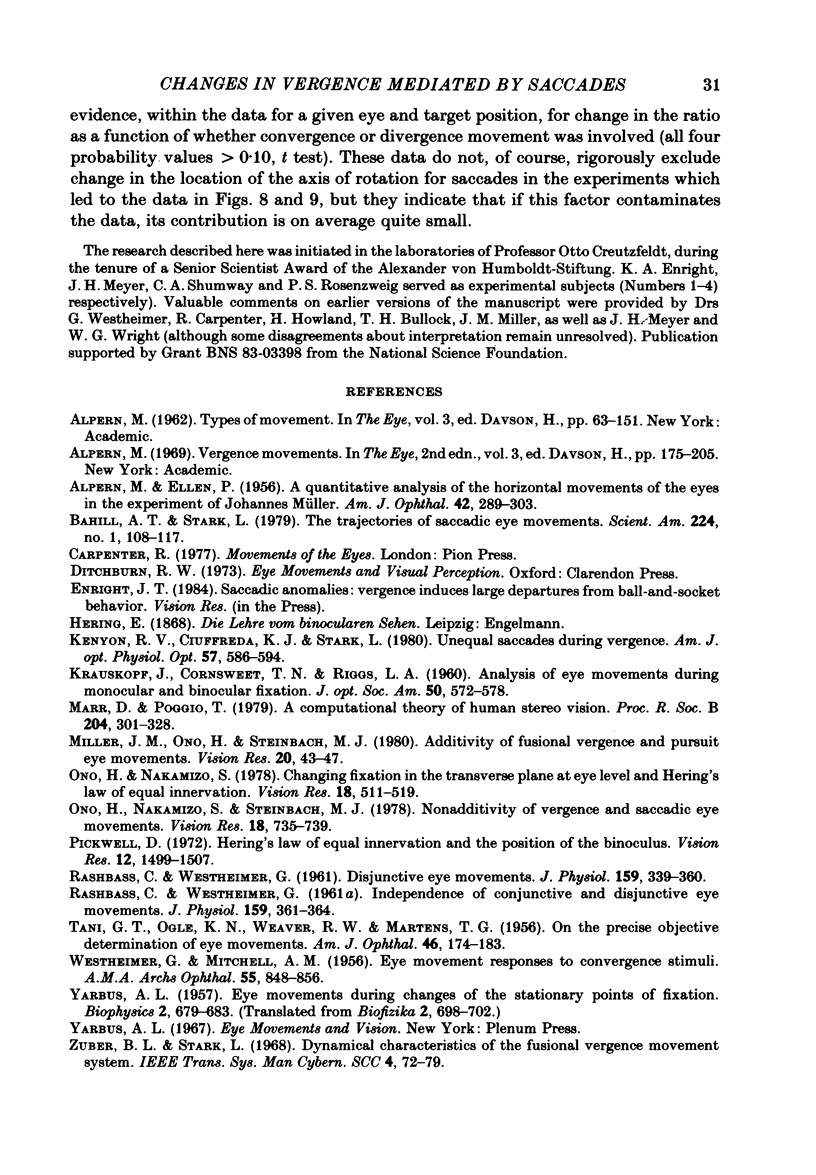
Selected References
These references are in PubMed. This may not be the complete list of references from this article.
- ALPERN M., ELLEN P. A quantitative analysis of the horizontal movements of the eyes in the experiment of Johannes Mueller. II. Effect of variation in target separation. Am J Ophthalmol. 1956 Oct;42(4 Pt 2):296–303. doi: 10.1016/0002-9394(56)90381-6. [DOI] [PubMed] [Google Scholar]
- Bahill A. T., Stark L. The trajectories of saccadic eye movements. Sci Am. 1979 Jan;240(1):108–117. doi: 10.1038/scientificamerican0179-108. [DOI] [PubMed] [Google Scholar]
- KRAUSKOPF J., CORNSWEET T. N., RIGGS L. A. Analysis of eye movements during monocular and binocular fixation. J Opt Soc Am. 1960 Jun;50:572–578. doi: 10.1364/josa.50.000572. [DOI] [PubMed] [Google Scholar]
- Kenyon R. V., Ciuffreda K. J., Stark L. Unequal saccades during vergence. Am J Optom Physiol Opt. 1980 Sep;57(9):586–594. doi: 10.1097/00006324-198009000-00009. [DOI] [PubMed] [Google Scholar]
- Marr D., Poggio T. A computational theory of human stereo vision. Proc R Soc Lond B Biol Sci. 1979 May 23;204(1156):301–328. doi: 10.1098/rspb.1979.0029. [DOI] [PubMed] [Google Scholar]
- Miller J. M., Ono H., Steinbach M. J. Additivity of fusional vergence and pursuit eye movements. Vision Res. 1980;20(1):43–47. doi: 10.1016/0042-6989(80)90140-6. [DOI] [PubMed] [Google Scholar]
- Ono H., Nakamizo S. Changing fixation in the transverse plane at eye level and Hering's law of equal innervation. Vision Res. 1978;18(5):511–519. doi: 10.1016/0042-6989(78)90195-5. [DOI] [PubMed] [Google Scholar]
- Ono H., Nakamizo S., Steinbach M. J. Nonadditivity of vergence and saccadic eye movement. Vision Res. 1978;18(6):735–739. doi: 10.1016/0042-6989(78)90152-9. [DOI] [PubMed] [Google Scholar]
- Pickwell L. D. Hering's law of equal innervation and the position of the binoculus. Vision Res. 1972 Sep;12(9):1499–1507. doi: 10.1016/0042-6989(72)90175-7. [DOI] [PubMed] [Google Scholar]
- RASHBASS C., WESTHEIMER G. Disjunctive eye movements. J Physiol. 1961 Dec;159:339–360. doi: 10.1113/jphysiol.1961.sp006812. [DOI] [PMC free article] [PubMed] [Google Scholar]
- RASHBASS C., WESTHEIMER G. Independence of conjugate and disjunctive eye movements. J Physiol. 1961 Dec;159:361–364. doi: 10.1113/jphysiol.1961.sp006813. [DOI] [PMC free article] [PubMed] [Google Scholar]
- TANI G. T., OGLE K. N., WEAVER R. W., MARTENS T. G. On the precise objective determination of eye movements. AMA Arch Ophthalmol. 1956 Feb;55(2):174–185. doi: 10.1001/archopht.1956.00930030176002. [DOI] [PubMed] [Google Scholar]
- WESTHEIMER G., MITCHELL A. M. Eye movement responses to convergence stimuli. AMA Arch Ophthalmol. 1956 Jun;55(6):848–856. doi: 10.1001/archopht.1956.00930030852012. [DOI] [PubMed] [Google Scholar]


